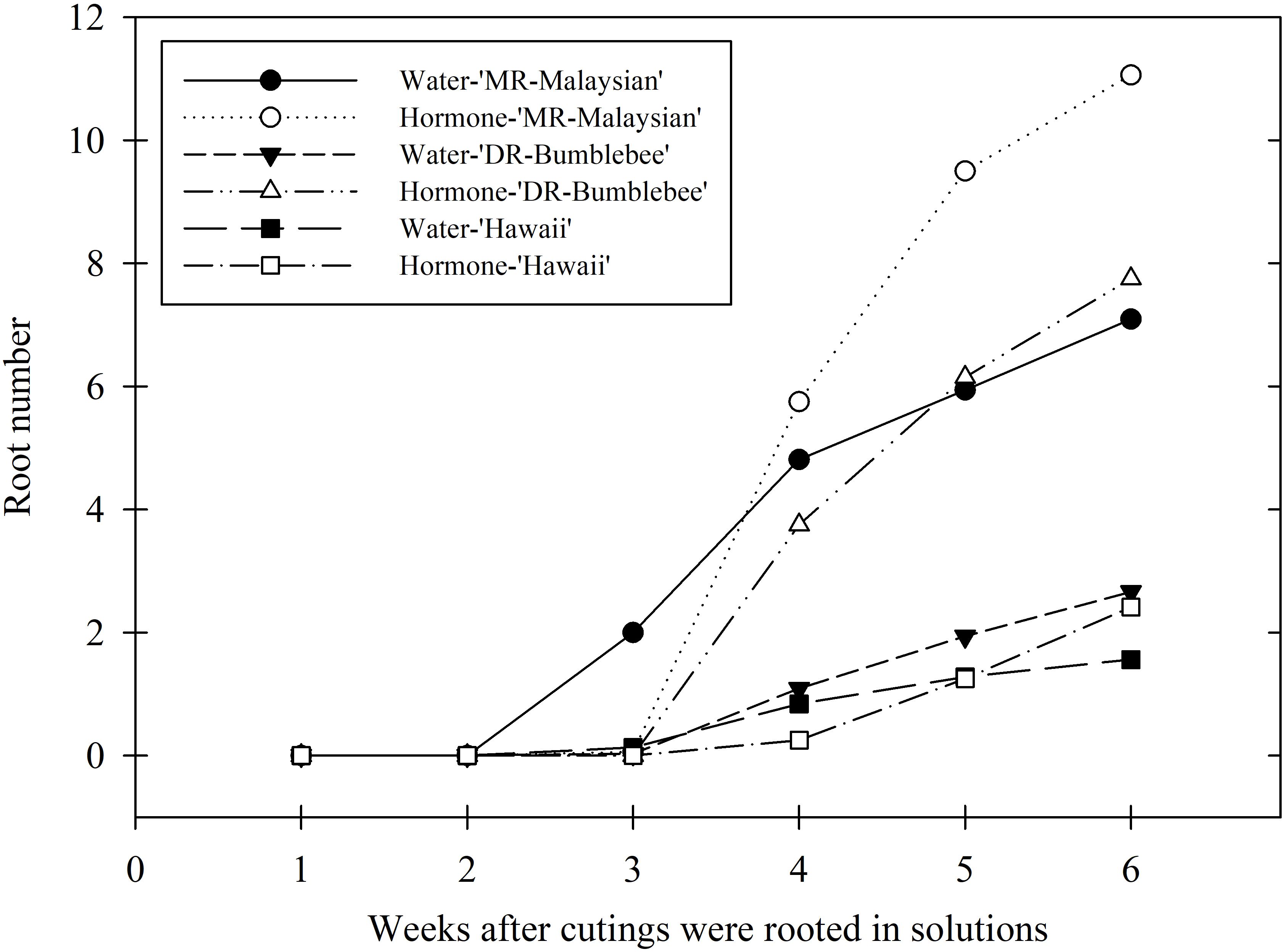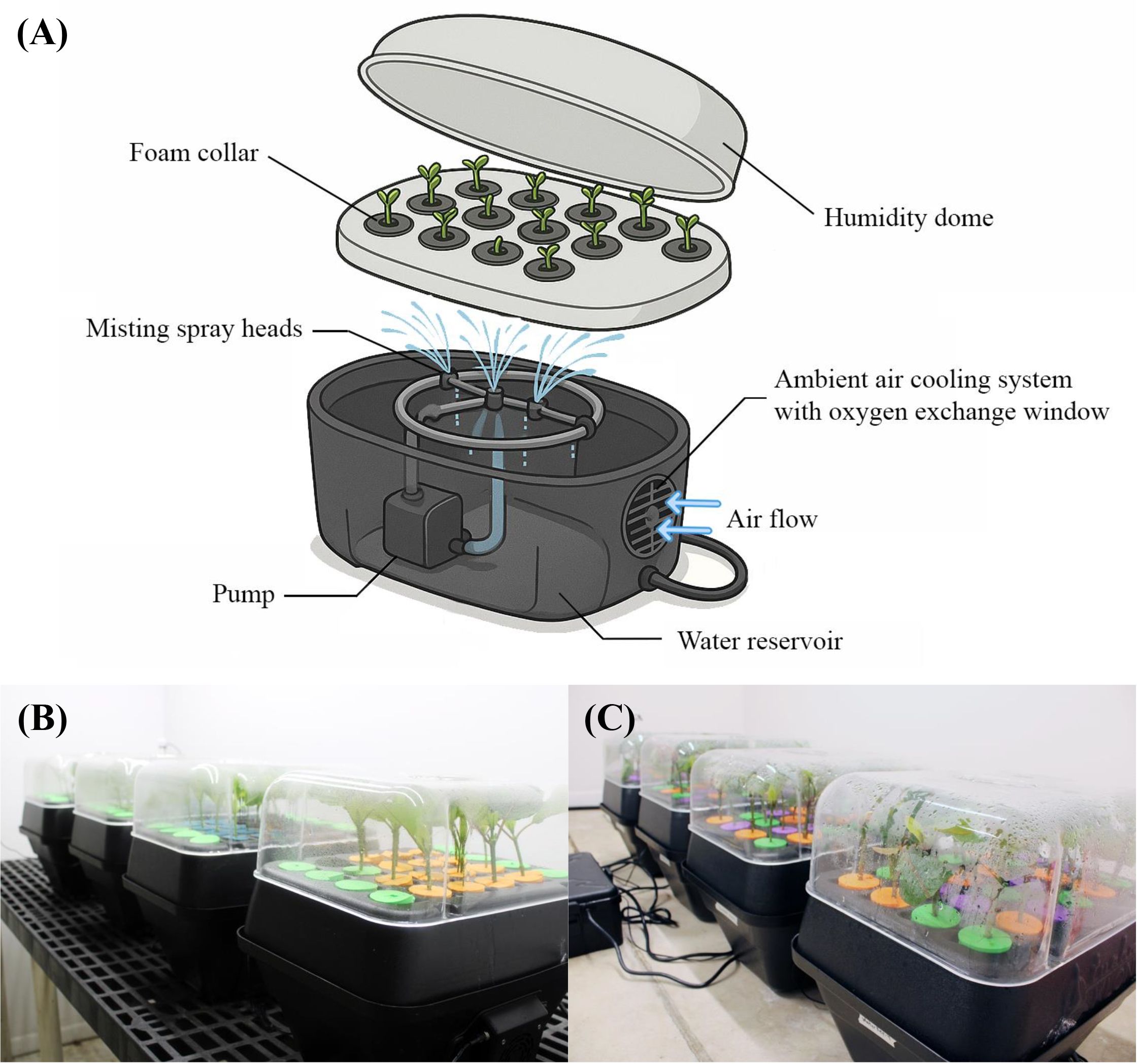- 1Mid-Florida Research and Education Center, Environmental Horticulture Department, University of Florida, Apopka, FL, United States
- 2Mid-Columbia Agricultural Research and Extension Center, College of Agricultural Sciences, Oregon State University, Hood River, OR, United States
- 3Tropical Research and Education Center, Department of Soil, Water, and Ecosystem Sciences, University of Florida, Homestead, FL, United States
A Correction on
Aeroponics enables consistent cutting propagation of kratom (Mitragyna speciosa): impacts of photoperiod, cultivar, and rooting hormone
By Zhang M, Montanez C, Pearson BJ, Li Y and Chen J (2025) Front. Plant Sci. 16:1650327. doi: 10.3389/fpls.2025.1650327
There was a mistake in Figure 4’s X-axis label as published. “Weeks after cuttings were rooted solutions” has been corrected to “Weeks after cuttings were rooted in solutions”. The corrected Figure 4 appears below.

Figure 4. Weekly average root number of three Mitragyna speciosa cultivars (MR-Malaysian, Hawaii, and DR-Bumblebee), with (hormone-) or without (water-) rooting hormone treatment, in Study II.
There was a mistake in Figure 2. The drawn image of the aeroponic unit has been updated. The corrected Figure 2 appears below.

Figure 2. Aeroponic units used in the rooting of Mitragyna speciosa stem cuttings. An illustration of the aeroponic unit (A). The setup of aeroponic units indoors for Study I (B) and Study II (C) experiments.
The original version of this article has been updated.
Publisher’s note
All claims expressed in this article are solely those of the authors and do not necessarily represent those of their affiliated organizations, or those of the publisher, the editors and the reviewers. Any product that may be evaluated in this article, or claim that may be made by its manufacturer, is not guaranteed or endorsed by the publisher.
Keywords: controlled environment, genotype, hydroponic, medicinal crops, root morphology, root scanning
Citation: Zhang M, Montanez C, Pearson BJ, Li Y and Chen J (2025) Correction: Aeroponics enables consistent cutting propagation of kratom (Mitragyna speciosa): impacts of photoperiod, cultivar, and rooting hormone. Front. Plant Sci. 16:1697035. doi: 10.3389/fpls.2025.1697035
Received: 01 September 2025; Accepted: 02 September 2025;
Published: 26 September 2025.
Approved by:
Frontiers Editorial Office, Frontiers Media SA, SwitzerlandCopyright © 2025 Zhang, Montanez, Pearson, Li and Chen. This is an open-access article distributed under the terms of the Creative Commons Attribution License (CC BY). The use, distribution or reproduction in other forums is permitted, provided the original author(s) and the copyright owner(s) are credited and that the original publication in this journal is cited, in accordance with accepted academic practice. No use, distribution or reproduction is permitted which does not comply with these terms.
*Correspondence: Jianjun Chen, ampjaGVuQHVmbC5lZHU=
 Mengzi Zhang
Mengzi Zhang Cynthia Montanez1
Cynthia Montanez1 Yuncong Li
Yuncong Li Jianjun Chen
Jianjun Chen